-
Executive Summary
-
Market Attractiveness Analysis
- Global Maritime Logistics and Services Market, by Cargo Type
- Global Maritime Logistics and Services Market, by Services
- Global Maritime Logistics and Services Market, by Solutions
- Global Maritime Logistics and Services Market, by Region
-
Market Introduction
-
Market Definition
-
Scope of the Study
-
Market Structure
-
Key Buying Criteria
-
Market Factor Indicator Analysis
-
Research Methodology
-
Research Process
-
Primary Research
-
Secondary Research
-
Market Size Estimation
-
Forecast Model
-
List of Assumptions
-
Market Insights
-
Market Dynamics
-
Introduction
-
Drivers
- Growing Seaborne Trade
- Increase in Free Trade Agreements Between Various Countries
- Improving Economic Conditions of Several Countries Paired with the Increase in Export and Import
- Drivers Impact Analysis
-
Restraints
- Implementation of the IMO Sulfur 2020 Regulation
- Tariff Hike
- Restraints Impact Analysis
-
Opportunities
- Consolidation of Container Shipping Business
- Digitalization and Automation
- Rapid Development of New Ports in the Developing Countries
-
Market/Technological Trends
- Artificial Intelligence
- Data Science
- Satellites
- Smart Ports
- 5G
-
Patent Trends
-
Regulatory Landscape/Standards
-
Market Factor Analysis
-
Value Chain/Supply Chain Analysis
- R&D
- Manufacturing
- Distribution & Sales
- Post-Sales Monitoring
-
Porter’s Five Forces Analysis
- Threat of New Entrants
- Bargaining Power of Suppliers
- Bargaining Power of Buyers
- Threat of Substitutes
- Intensity of Rivalry
-
Global Maritime Logistics and Services Market, by Cargo Type
-
Introduction
-
General Cargo
- Break Bulk
- Neo Bulk
- Containerized
-
Bulk Cargo
- Liquid Bulk
- Dry Bulk
-
Global Maritime Logistics and Services Market, by Services
-
Introduction
-
Port and Cargo Handling
-
Route Surveys
-
Multimodal Transportation
-
Lifting Equipment Management
-
Packing and Crating
-
Vessel Chartering
-
Insurance and Legal Support
-
Crew Management
-
Global Maritime Logistics and Services Market, by Solutions
-
Introduction
-
Supply Chain Management
-
Warehouse Management
-
Port Equipment Training
-
Others
-
Global Maritime Logistics and Services Market, by Region
-
Introduction
-
North America
- US
- Canada
-
Europe
- UK
- Germany
- France
- Italy
- Rest of Europe
-
Asia-Pacific
- China
- Japan
- India
- Australia
- Rest of Asia-Pacific
-
Middle East & Africa
- Saudi Arabia
- UAE
- Rest of the Middle East & Africa
-
Latin America
- Brazil
- Rest of Latin America
-
Competitive Landscape
-
Competitive Overview
-
Competitor Dashboard
-
Major Growth Strategies in the Global Maritime Logistics and Services Market
-
Competitive Benchmarking
-
Market Share Analysis
-
Leading Player in Terms of Number of Developments in the Global Maritime Logistics and Services Market
-
Key Developments & Growth Strategies
- New Product Launches/Developments
- Mergers & Acquisitions
- Joint Ventures
-
Company Profiles
-
Key Market Players
- A.P. Moller-Maersk A/S
- Mediterranean Shipping Company S.A.
- China Ocean Shipping Company Limited
- CMA CGM S.A.
- Hapag-Lloyd AG
- Ocean Network Express Pte. Ltd
- Evergreen Line
- YangMing Marine Transport Corp.
- Hyundai Merchant Marine
- Pacific International Lines
-
(Company overview, products & services offered, financial overview, key developments, SWOT analysis, and key strategies to be covered for public companies)
-
Other Prominent Players
-
Wilh. Wilhelmsen Holding ASA
-
NorSea Group AS
-
Anglo Eastern Univan Group
-
Tata Martrade International Logistics Limited
-
Algeposa Group
-
MTL Marine Trans Logistics Pvt Ltd
-
Toll Group
-
ClearMetal, Inc.
-
Shipamax Ltd
-
We4Sea BV
-
Appendix
-
References
-
Related Reports
-
List of Abbreviations
-
List of Tables
-
LIST OF ASSUMPTIONS
-
MAJOR PATENTS GRANTED FOR MARITIME LOGISTICS AND SERVICES (2014–2020)
-
GLOBAL MARITIME LOGISTICS AND SERVICES MARKET, BY CARGO TYPE, 2025-2034 (USD MILLION)
-
GLOBAL MARITIME LOGISTICS AND SERVICES MARKET, BY SERVICES, 2025-2034 (USD MILLION)
-
GLOBAL MARITIME LOGISTICS AND SERVICES MARKET, BY SOLUTIONS, 2025-2034 (USD MILLION)
-
GLOBAL MARITIME LOGISTICS AND SERVICES MARKET, BY REGION, 2025-2034 (USD MILLION)
-
NORTH AMERICA: MARITIME LOGISTICS AND SERVICES MARKET, BY COUNTRY, 2025-2034 (USD MILLION)
-
NORTH AMERICA: MARITIME LOGISTICS AND SERVICES MARKET, BY CARGO TYPE, 2025-2034 (USD MILLION)
-
NORTH AMERICA: MARITIME LOGISTICS AND SERVICES MARKET, BY SERVICES, 2025-2034 (USD MILLION)
-
NORTH AMERICA: MARITIME LOGISTICS AND SERVICES MARKET, BY SOLUTIONS, 2025-2034 (USD MILLION)
-
US: MARITIME LOGISTICS AND SERVICES MARKET, BY CARGO TYPE, 2025-2034 (USD MILLION)
-
US: MARITIME LOGISTICS AND SERVICES MARKET, BY SERVICES, 2025-2034 (USD MILLION)
-
US: MARITIME LOGISTICS AND SERVICES MARKET, BY SOLUTIONS, 2025-2034 (USD MILLION)
-
CANADA: MARITIME LOGISTICS AND SERVICES MARKET, BY CARGO TYPE, 2025-2034 (USD MILLION)
-
CANADA: MARITIME LOGISTICS AND SERVICES MARKET, BY SERVICES, 2025-2034 (USD MILLION)
-
CANADA: MARITIME LOGISTICS AND SERVICES MARKET, BY SOLUTIONS, 2025-2034 (USD MILLION)
-
EUROPE: MARITIME LOGISTICS AND SERVICES MARKET, BY COUNTRY, 2025-2034 (USD MILLION)
-
EUROPE: MARITIME LOGISTICS AND SERVICES MARKET, BY CARGO TYPE, 2025-2034 (USD MILLION)
-
EUROPE: MARITIME LOGISTICS AND SERVICES MARKET, BY SERVICES, 2025-2034 (USD MILLION)
-
EUROPE: MARITIME LOGISTICS AND SERVICES MARKET, BY SOLUTIONS, 2025-2034 (USD MILLION)
-
UK: MARITIME LOGISTICS AND SERVICES MARKET, BY CARGO TYPE, 2025-2034 (USD MILLION)
-
UK: MARITIME LOGISTICS AND SERVICES MARKET, BY SERVICES, 2025-2034 (USD MILLION)
-
UK: MARITIME LOGISTICS AND SERVICES MARKET, BY SOLUTIONS, 2025-2034 (USD MILLION)
-
GERMANY: MARITIME LOGISTICS AND SERVICES MARKET, BY CARGO TYPE, 2025-2034 (USD MILLION)
-
GERMANY: MARITIME LOGISTICS AND SERVICES MARKET, BY SERVICES, 2025-2034 (USD MILLION)
-
GERMANY: MARITIME LOGISTICS AND SERVICES MARKET, BY SOLUTIONS, 2025-2034 (USD MILLION)
-
FRANCE: MARITIME LOGISTICS AND SERVICES MARKET, BY CARGO TYPE, 2025-2034 (USD MILLION)
-
FRANCE: MARITIME LOGISTICS AND SERVICES MARKET, BY SERVICES, 2025-2034 (USD MILLION)
-
FRANCE: MARITIME LOGISTICS AND SERVICES MARKET, BY SOLUTIONS, 2025-2034 (USD MILLION)
-
ITALY: MARITIME LOGISTICS AND SERVICES MARKET, BY CARGO TYPE, 2025-2034 (USD MILLION)
-
ITALY: MARITIME LOGISTICS AND SERVICES MARKET, BY SERVICES, 2025-2034 (USD MILLION)
-
ITALY: MARITIME LOGISTICS AND SERVICES MARKET, BY SOLUTIONS, 2025-2034 (USD MILLION)
-
REST OF EUROPE: MARITIME LOGISTICS AND SERVICES MARKET, BY CARGO TYPE, 2025-2034 (USD MILLION)
-
REST OF EUROPE: MARITIME LOGISTICS AND SERVICES MARKET, BY SERVICES, 2025-2034 (USD MILLION)
-
REST OF EUROPE: MARITIME LOGISTICS AND SERVICES MARKET, BY SOLUTIONS, 2025-2034 (USD MILLION)
-
ASIA-PACIFIC: MARITIME LOGISTICS AND SERVICES MARKET, BY COUNTRY, 2025-2034 (USD MILLION)
-
ASIA-PACIFIC: MARITIME LOGISTICS AND SERVICES MARKET, BY CARGO TYPE, 2025-2034 (USD MILLION)
-
ASIA-PACIFIC: MARITIME LOGISTICS AND SERVICES MARKET, BY SERVICES, 2025-2034 (USD MILLION)
-
ASIA-PACIFIC: MARITIME LOGISTICS AND SERVICES MARKET, BY SOLUTIONS, 2025-2034 (USD MILLION)
-
CHINA: MARITIME LOGISTICS AND SERVICES MARKET, BY CARGO TYPE, 2025-2034 (USD MILLION)
-
CHINA: MARITIME LOGISTICS AND SERVICES MARKET, BY SERVICES, 2025-2034 (USD MILLION)
-
CHINA: MARITIME LOGISTICS AND SERVICES MARKET, BY SOLUTIONS, 2025-2034 (USD MILLION)
-
INDIA: MARITIME LOGISTICS AND SERVICES MARKET, BY CARGO TYPE, 2025-2034 (USD MILLION)
-
INDIA: MARITIME LOGISTICS AND SERVICES MARKET, BY SERVICES, 2025-2034 (USD MILLION)
-
INDIA: MARITIME LOGISTICS AND SERVICES MARKET, BY SOLUTIONS, 2025-2034 (USD MILLION)
-
JAPAN: MARITIME LOGISTICS AND SERVICES MARKET, BY CARGO TYPE, 2025-2034 (USD MILLION)
-
JAPAN: MARITIME LOGISTICS AND SERVICES MARKET, BY SERVICES, 2025-2034 (USD MILLION)
-
JAPAN: MARITIME LOGISTICS AND SERVICES MARKET, BY SOLUTIONS, 2025-2034 (USD MILLION)
-
AUSTRALIA: MARITIME LOGISTICS AND SERVICES MARKET, BY CARGO TYPE, 2025-2034 (USD MILLION)
-
AUSTRALIA: MARITIME LOGISTICS AND SERVICES MARKET, BY SERVICES, 2025-2034 (USD MILLION)
-
AUSTRALIA: MARITIME LOGISTICS AND SERVICES MARKET, BY SOLUTIONS, 2025-2034 (USD MILLION)
-
REST OF ASIA-PACIFIC: MARITIME LOGISTICS AND SERVICES MARKET, BY CARGO TYPE, 2025-2034 (USD MILLION)
-
REST OF ASIA-PACIFIC: MARITIME LOGISTICS AND SERVICES MARKET, BY SERVICES, 2025-2034 (USD MILLION)
-
REST OF ASIA-PACIFIC: MARITIME LOGISTICS AND SERVICES MARKET, BY SOLUTIONS, 2025-2034 (USD MILLION)
-
MIDDLE EAST & AFRICA: MARITIME LOGISTICS AND SERVICES MARKET, BY COUNTRY, 2025-2034 (USD MILLION)
-
MIDDLE EAST & AFRICA: MARITIME LOGISTICS AND SERVICES MARKET, BY CARGO TYPE, 2025-2034 (USD MILLION)
-
MIDDLE EAST & AFRICA: MARITIME LOGISTICS AND SERVICES MARKET, BY SERVICES, 2025-2034 (USD MILLION)
-
MIDDLE EAST & AFRICA: MARITIME LOGISTICS AND SERVICES MARKET, BY SOLUTIONS, 2025-2034 (USD MILLION)
-
SAUDI ARABIA: MARITIME LOGISTICS AND SERVICES MARKET, BY CARGO TYPE, 2025-2034 (USD MILLION)
-
SAUDI ARABIA: MARITIME LOGISTICS AND SERVICES MARKET, BY SERVICES, 2025-2034 (USD MILLION)
-
SAUDI ARABIA: MARITIME LOGISTICS AND SERVICES MARKET, BY SOLUTIONS, 2025-2034 (USD MILLION)
-
UAE: MARITIME LOGISTICS AND SERVICES MARKET, BY CARGO TYPE, 2025-2034 (USD MILLION)
-
UAE: MARITIME LOGISTICS AND SERVICES MARKET, BY SERVICES, 2025-2034 (USD MILLION)
-
UAE: MARITIME LOGISTICS AND SERVICES MARKET, BY SOLUTIONS, 2025-2034 (USD MILLION)
-
REST OF THE MIDDLE EAST & AFRICA: MARITIME LOGISTICS AND SERVICES MARKET, BY CARGO TYPE, 2025-2034 (USD MILLION)
-
REST OF THE MIDDLE EAST & AFRICA: MARITIME LOGISTICS AND SERVICES MARKET, BY SERVICES, 2025-2034 (USD MILLION)
-
REST OF THE MIDDLE EAST & AFRICA: MARITIME LOGISTICS AND SERVICES MARKET, BY SOLUTIONS, 2025-2034 (USD MILLION)
-
LATIN AMERICA: MARITIME LOGISTICS AND SERVICES MARKET, BY COUNTRY, 2025-2034 (USD MILLION)
-
LATIN AMERICA: MARITIME LOGISTICS AND SERVICES MARKET, BY CARGO TYPE, 2025-2034 (USD MILLION)
-
LATIN AMERICA: MARITIME LOGISTICS AND SERVICES MARKET, BY SERVICES, 2025-2034 (USD MILLION)
-
LATIN AMERICA: MARITIME LOGISTICS AND SERVICES MARKET, BY SOLUTIONS, 2025-2034 (USD MILLION)
-
BRAZIL: MARITIME LOGISTICS AND SERVICES MARKET, BY CARGO TYPE, 2025-2034 (USD MILLION)
-
BRAZIL: MARITIME LOGISTICS AND SERVICES MARKET, BY SERVICES, 2025-2034 (USD MILLION)
-
BRAZIL: MARITIME LOGISTICS AND SERVICES MARKET, BY SOLUTIONS, 2025-2034 (USD MILLION)
-
REST OF LATIN AMERICA: MARITIME LOGISTICS AND SERVICES MARKET, BY CARGO TYPE, 2025-2034 (USD MILLION)
-
REST OF LATIN AMERICA: MARITIME LOGISTICS AND SERVICES MARKET, BY SERVICES, 2025-2034 (USD MILLION)
-
REST OF LATIN AMERICA: MARITIME LOGISTICS AND SERVICES MARKET, BY SOLUTIONS, 2025-2034 (USD MILLION)
-
THE MOST ACTIVE PLAYERS IN THE GLOBAL MARITIME LOGISTICS AND SERVICES MARKET
-
CONTRACTS & AGREEMENTS
-
MERGERS & ACQUISITIONS
-
PRODUCT DEVELOPMENTS
-
EXPANSIONS & INVESTMENTS
-
JOINT VENTURES & PARTNERSHIPS
-
-
List of Figures
-
MARKET SYNOPSIS
-
GLOBAL MARITIME LOGISTICS AND SERVICES MARKET: MARKET ATTRACTIVENESS ANALYSIS
-
GLOBAL MARITIME LOGISTICS AND SERVICES MARKET ANALYSIS, BY CARGO TYPE
-
GLOBAL MARITIME LOGISTICS AND SERVICES MARKET ANALYSIS, BY SERVICES
-
GLOBAL MARITIME LOGISTICS AND SERVICES MARKET ANALYSIS, BY SOLUTIONS
-
GLOBAL MARITIME LOGISTICS AND SERVICES MARKET ANALYSIS, BY REGION
-
GLOBAL MARITIME LOGISTICS AND SERVICES MARKET: MARKET STRUCTURE
-
KEY BUYING CRITERIA FOR MARITIME LOGISTICS AND SERVICES
-
RESEARCH PROCESS OF MRFR
-
NORTH AMERICA: MARKET SIZE & MARKET SHARE, BY COUNTRY, 2020 VS 2027
-
EUROPE: MARKET SIZE & MARKET SHARE, BY COUNTRY, 2020 VS 2027
-
ASIA-PACIFIC: MARKET SIZE & MARKET SHARE, BY COUNTRY, 2020 VS 2027
-
MIDDLE EAST & AFRICA: MARKET SIZE & MARKET SHARE, BY COUNTRY, 2020 VS 2027
-
LATIN AMERICA: MARKET SIZE & MARKET SHARE, BY REGION, 2020 VS 2027
-
MARKET DYNAMICS OVERVIEW
-
DRIVERS IMPACT ANALYSIS: GLOBAL MARITIME LOGISTICS AND SERVICES MARKET
-
RESTRAINTS IMPACT ANALYSIS: GLOBAL MARITIME LOGISTICS AND SERVICES MARKET
-
PORTER’S FIVE FORCES ANALYSIS OF THE GLOBAL MARITIME LOGISTICS AND SERVICES MARKET
-
SUPPLY CHAIN: GLOBAL MARITIME LOGISTICS AND SERVICES MARKET
-
GLOBAL MARITIME LOGISTICS AND SERVICES MARKET SHARE, BY CARGO TYPE, 2020 (% SHARE)
-
GLOBAL MARITIME LOGISTICS AND SERVICES MARKET SHARE, BY SOLUTIONS, 2020 (% SHARE)
-
GLOBAL MARITIME LOGISTICS AND SERVICES MARKET SHARE, BY REGION, 2020 (% SHARE)
-
NORTH AMERICA: MARITIME LOGISTICS AND SERVICES MARKET SHARE, BY COUNTRY, 2020 (% SHARE)
-
EUROPE: MARITIME LOGISTICS AND SERVICES MARKET SHARE, BY COUNTRY, 2020 (% SHARE)
-
ASIA-PACIFIC: MARITIME LOGISTICS AND SERVICES MARKET SHARE, BY COUNTRY, 2020 (% SHARE)
-
MIDDLE EAST & AFRICA: MARITIME LOGISTICS AND SERVICES MARKET SHARE, BY COUNTRY, 2020 (% SHARE)
-
LATIN AMERICA: MARITIME LOGISTICS AND SERVICES MARKET SHARE, BY COUNTRY, 2020 (% SHARE)
-
COMPETITOR DASHBOARD: GLOBAL MARITIME LOGISTICS AND SERVICES MARKET
-
CAPITAL MARKET RATIO AND FINANCIAL MATRIX
-
CONTRACTS & AGREEMENTS: THE MAJOR STRATEGY ADOPTED BY KEY PLAYERS IN THE GLOBAL MARITIME LOGISTICS AND SERVICES MARKET
-
BENCHMARKING OF MAJOR COMPETITORS
-
MAJOR MANUFACTURERS MARKET SHARE ANALYSIS, 2020
-
"

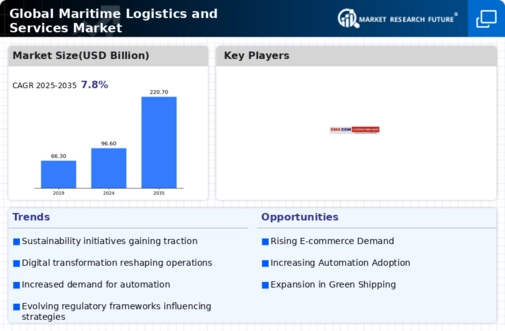
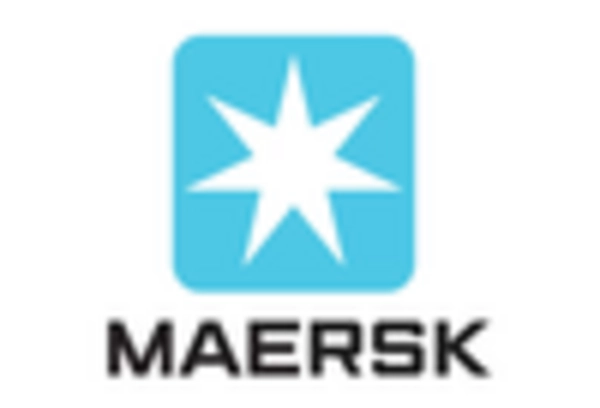
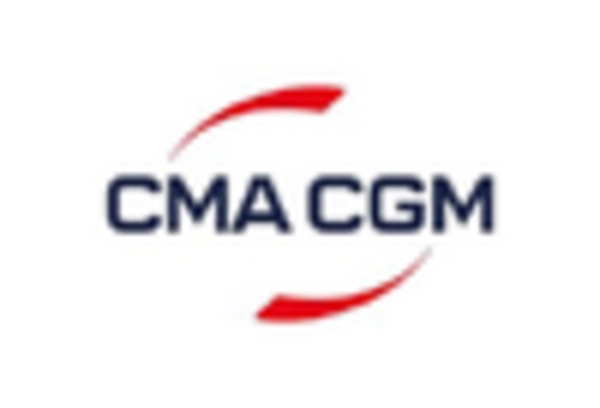
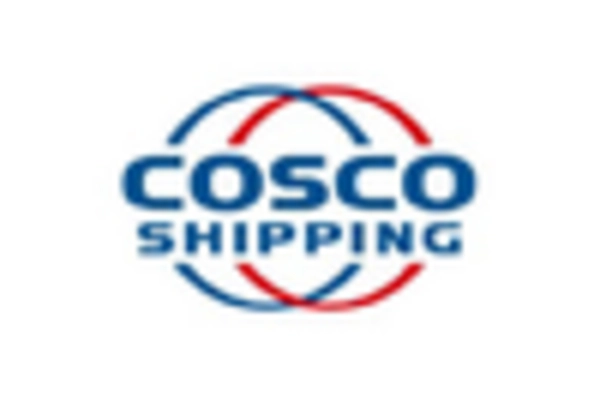

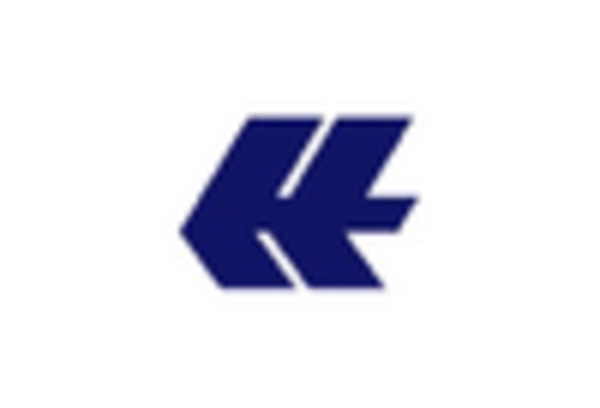
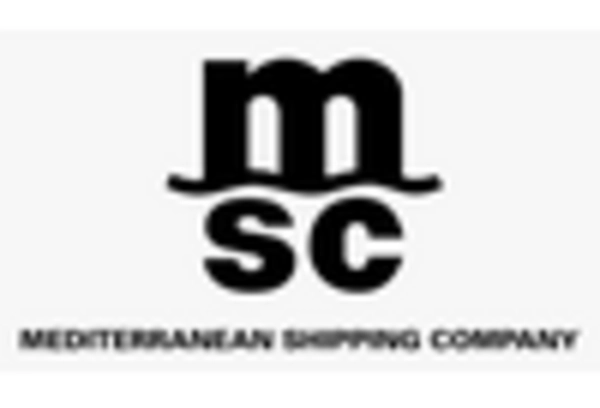









Leave a Comment